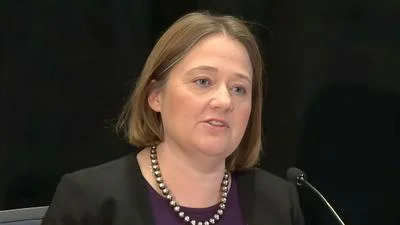Today, as part of its ongoing efforts through the National Roadway Safety Strategy (NRSS) to prioritize safety and meet milestones laid out in the Bipartisan Infrastructure Law, the U.S. Department of Transportation’s Federal Highway Administration (FHWA) announced new guidance to help states address the crisis of roadway deaths across our nation. Vulnerable road users, such as pedestrians, cyclists, and people who use wheelchairs, accounted for approximately 20% of the 42,915 people who were killed in motor vehicle crashes in 2021, according to the National Highway Safety Administration, an increase of 13% over 2020.
The guidance released today will provide additional clarity for states as they develop their Vulnerable Road User Safety Assessment, a new safety approach established under President Biden’s Bipartisan Infrastructure Law to assess the safety performance of individual states, identify areas of high risk to vulnerable road users, and determine what safety improvements will mitigate these safety risks.
“It is up to all of us to keep those who walk, bike or roll safe as they travel,” said U.S. Transportation Secretary Pete Buttigieg. “Because of the Bipartisan Infrastructure Law, states have new resources to improve safety for vulnerable travelers, make our roads safer and more accessible for all, and help move us closer to reaching the ultimate vision of zero fatalities.”
By law, the Vulnerable Road User Safety Assessments developed by states to identify areas of high risk must be driven by demographic and performance related data developed in consultation with local governments that represent high risk areas as well. In developing these assessments, FHWA is encouraging states to work with institutional, advocacy, and community groups, particularly those that represent populations that are involved in these crashes and reside in the locations where fatalities and serious injuries are occurring.
Once completed, FHWA encourages states to use their Vulnerable Road User Safety Assessment findings to adjust project selection and investment strategies. FHWA’s guidance on the assessment will help states follow that legal requirement as they work to reduce roadway fatalities and improve the safety of road users who walk, bike, roll and rely on access to transportation systems.
“This guidance can help States identify what safety issues for those outside of a vehicle need to be addressed and where,” said Acting Federal Highway Administrator Stephanie Pollack. “States are then positioned to incorporate the results as they make decisions about their safety investments. It also improves transportation equity by making sure extensive dialogue with relevant stakeholders takes place and the concerns of those most at risk in towns, cities and underserved communities are heard through better public engagement at the local level.”
The Vulnerable Road User Safety Assessment guidance complements the NRSS, U.S. DOT’s comprehensive approach to reach zero fatalities on our nation’s roadways through a Safe System Approach. Earlier this month the Department released a new dashboard to provide stakeholders with more transparency about the implementation status of key NRSS programs and activities across U.S. DOT.
The Bipartisan Infrastructure Law provides a historic opportunity for FHWA to work closely with state, local, and Tribal partners to put increased transportation funding to work incorporating safety for all users into every federally funded road project. Safety-related investments, including Complete Streets activities, are eligible through most Federal-aid funding programs. Earlier this year, FHWA issued guidance for the Highway Safety Improvement Program, which received an additional $4 billion in funding under the Bipartisan Infrastructure Law. The Bipartisan Infrastructure La
Original source can be found here.







